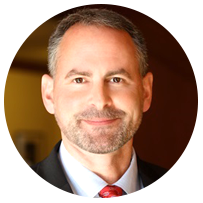
This post is from The Harbus, the news organization of Harvard Business School. Click here to see the original article.
Jody Greenstone Miller is a thought leader on the future of work and the Co-Founder and CEO of Business Talent Group (BTG), the leading global marketplace for top independent consultants and executives interested in project-based work.
BTG was recently named to Inc. Magazine’s prestigious list of the 5,000 fastest-growing companies in America and to the Forbes list of America’s 100 “Most Promising Companies.” Fortune Magazine named Jody one of its ten “Most Promising Women Entrepreneurs” in September 2015. She was also named by EY as one of twelve “Entrepreneurial Winning Women” in North America.
In this interview, Jody discusses her thoughts on alternative paths to reach leadership roles in organizations and how traditional work models are propagating the gender gap in leadership.
Tami Kakaraparthi (HBS ’17): I want focus on a few primary areas today. First, the future of work and how you imagine that; second, the women’s leadership gap; and third, any ties you see between the two. Before we dive right into those topics, I wanted to get an understanding of why these areas became your focus. What brought you there?
Jody Miller: Early on in my career, I ran a company and loved it. Then I had my daughter, and I didn't know how to run a company the way I was required to do it and have the kind of relationship I wanted with my daughter. That's what drove me to look at this and think, is it possible to do it differently? It was really the drive to create an option that I just didn't feel existed in the world.
When I look at why we have such limited progress, I think it has to do with the fact that most women are not willing to make the kind of sacrifices that are needed today if you want to rise to the top of your organization.
The company I created, Business Talent Group (BTG), tries to create alternate career options for people that are different than what is currently available in the world. Our mission is to create a global platform for high independent talent to do project-based work.
TK: Could you tell speak more about what these alternate options look like?
JM: When you think about work, you have to separate flexibility from availability from absolute workload. Those are three totally different concepts, and all of them, in my opinion, have to be available.
For example, inside BTG we allow anybody, but most significantly our leadership, to work less than forty hours a week if that’s what they want and not penalize them. We are structuring the job so it can be done within the shorter hours, which means thinking about and dividing up the role differently. Or one might take an intensive project, work sixty or eighty hours a week and then take four months off once the project is finished. The problem is that currently, we don’t have models that allow people with different work requirements to rise inside of organizations.
TK: Given the labor supply in the current market, what would be the incentive of the company to completely restructure job roles and shift their mindset?
JM: There are several reasons companies should try this. Firstly, the way we manage today is lazy. This new model requires a much greater skill of a manager because everything has to be thought out in advance.
The archetype of a company in the twentieth century was a pyramid structure where everybody stays for many years and goes up. In the twenty-first century it’s going to look like a puzzle. People are going to be coming and going, there are going to be different shapes, and management will be about aggregating talent from a lot of different sources.
Once you go through this, it is much better for the company because there is more precision in assigning the right people to the right projects and hence more discipline about work and productivity metrics.
Number two, I think the talent shortages that are coming are real. Companies are going to have to change the way they think about work in order to attract enough of the people that they need at the higher levels. I think three populations that really are in the bulls-eye: women who are getting more education than men, millennials who expect more fulfillment from their careers, and baby boomers who will only come back in on different terms.
TK: You have once said, “Women don’t like to lean in because they don’t like what they’re being asked to lean into.” How do you think the traditional work structure is holding women back?
JM: I don’t think women who are professionally successful have a problem with leaning in. We all know how to lean in. The reason you don’t have more women in the top is that there’s only one model of success, which requires an enormous sacrifice to everything else in your life.
There are many men who decide not to do this either, so it’s not just women. The men who decide not to do this don’t talk about it because there are enough men who decide to do it that they’re the ones taking all the slots.
In my view, there is nothing wrong with talking about bias, but that alone is not enough. To really solve the problem, there have to be different paths to the top. It is a fundamental disconnect between the ability to imagine someone at the very pinnacle of an organization, but reaching that pinnacle through a different path.
TK: Do you think asking women to correct for biases could have negative consequences?
JM: I think if women are constantly being put under a microscope and being told, “people don’t like your voice, people don’t like you,” it could have negative consequences. Constantly telling women about all the things holding them back, that they can’t control, doesn’t feel positive to me. What is your choice?
The attention on this problem is good. But the fact that the conversation has been almost entirely focused on either women needing to be more aggressive or the unconscious biases that exist in society have limited the progress we have made. Even if both of these issues are solved, I still don’t think you would close the gap enough.
We would be better off spending time on truly making the institutional changes at work. It’s like politics. Political coverage is almost entirely about the horse race and very little about what’s really going on to solve our problems because it’s a lot easier and sexier to talk about the horse race.
If we don’t tackle the third leg of the problem, which is truly making alternative paths to the top, we will not see fundamental changes occur.
The saving grace is that demographic changes force companies to make these shifts. Demographic changes give leverage to the people who want to do it differently. While we are not there yet, it will happen, just that it will take longer to happen that it should.
TK: Would you have any suggestions on what we, as business school graduates, should focus on in our careers over the next five or ten years, to make sure that we position ourselves well?
JM: First, coming from a business school gives you a huge advantage because Harvard is among the best markers of credibility. Beyond that, I think it’s important to get experience for the first few years in a really high-quality professional environment. It will train you to be a professional and help you forever.
After that, keeping your eye on the new trends and getting exposure is probably the best single thing you can do. It’s important not to get complacent in the fact that you’ve got a secure job. Make sure you’re in the flow of the next generation of innovation; otherwise you’re going to become a highly paid expert on something that doesn’t matter anymore.
Jody’s thoughts are a refreshing take on problems that are especially relevant as we make important career choices. The first step to changing the fundamental structure of current work models is to challenge them, and we at HBS are very well poised to start instituting these changes and helping shape the way professional roles and the workplace overall will look in the future.






 nomics foundation. HBX presented information in these areas in such an effective way that I came out with a confident understanding of not just the concepts, but the applications of accounting and economic principles.
nomics foundation. HBX presented information in these areas in such an effective way that I came out with a confident understanding of not just the concepts, but the applications of accounting and economic principles.





















